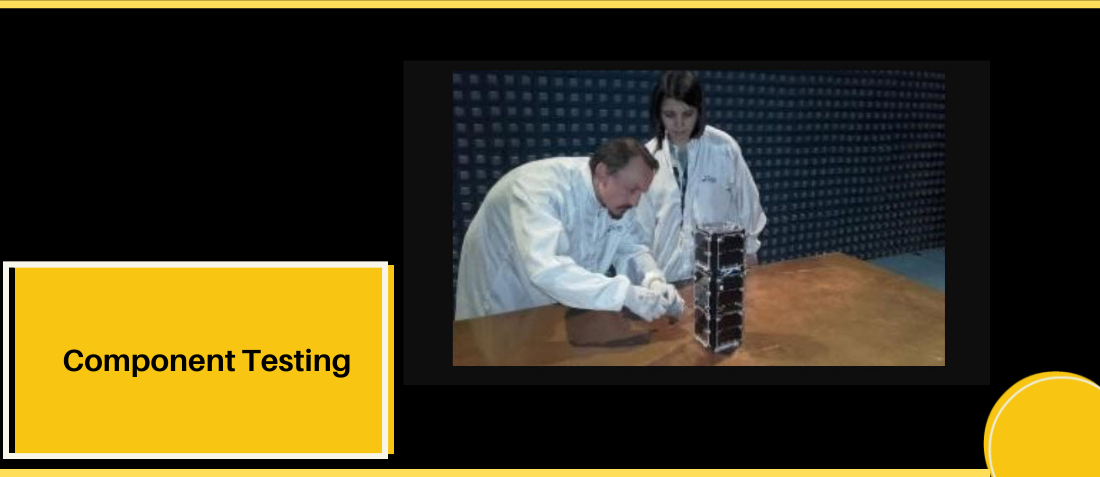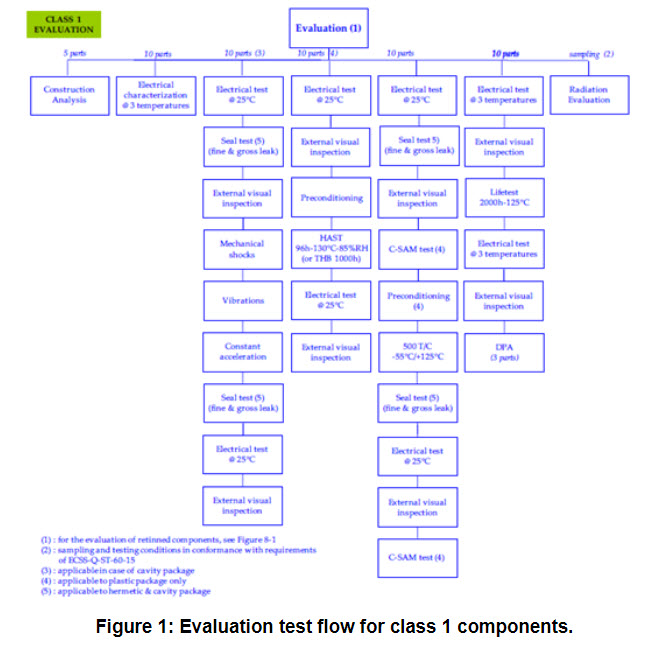
Component Testing for New Space Applications
- Posted by Enrique Cordero
- On July 2, 2021
- 0
One of the pillars for the successful development and reliability of new space projects is the appropriate selection and subsequent testing of commercially used components.
Before starting with the testing of the different devices, it is crucial to choose the test flow to which they will be submitted and the corresponding conditions to be applied.
The ESCC-Q-ST-60-13C (Space Product Assurance Commercial EEE components) standard defines the requirements for selection, control, procurement, and usage of EEE commercial components for space projects.
This standard applies to commercial encapsulated active monolithic parts (integrated circuits and discrete):
- diodes and microwave diodes.
- integrated circuits and microwave IC (MMIC).
- transistors and microwave transistors.
In addition, the following families of EEE components are not addressed by the present ECSS standard but they can be used as a guideline and revisited on a case/case basis:
- photodiodes and phototransistors.
- light-emitting diodes (LED)and lasers.
- optocouplers.
In line with ECSS-Q-ST-60, this standard differentiates between three classes of components through three different sets of standardization requirements (clauses) to be met.
The three classes provide for three levels of the trade-off between assurance and risk. The highest assurance and lowest risk are provided by class 1 and the lowest assurance and highest risk by class 3. Procurement costs are typically highest for class 1 and lowest for class 3. Mitigation and other engineering measures can decrease the total cost of ownership differences between the three classes. The project objectives, definition, and constraints determine which class or class of components are appropriate to utilize within the system and subsystems.
This standard describes the differences and the minimum testing requirements necessary to each of these three classes for evaluation, screening, and lot acceptance. The following test sequence shows the evaluation test sequence for class 1 components, this sequence is the same in the three classes described in the standard with different severity and test conditions to each class.
The main differences between this test flow and the traditional test sequences described in the ESSC standards to flight components are summarized in the following two points:
1. Non-Destructive inspections after the test:
- The X-ray Inspection is used to verify the quality or degradation of the assembly process. Still, now it is included the CSAM Inspection to analyze the delamination effects in the plastics packaged.
- The Seal Test (fine and gross leakages) and PIND Test are eliminated because it is not applicable when the package has no cavity.
2. Temperatures at operational conditions.
Usually, the commercial components show a temperature operational range less than -55ºC to +125ºC, but all ESCC standards consider this range applicable for space applications. Since COTS cannot be tested out of its operational temperature range, the EEE engineer should select the test conditions to design an equivalent test. The objective is to test the reliability of the components without applying test conditions that could destroy them.
Therefore, the burn-in and life test should be performed at maximum operating conditions of the component but with a duration equivalent to the requirement for a complete range of -55 to +125ºC.
The following table summarizes some examples of the designed reliability test with the Arrhenius equation and an estimated Ea= 0.4eV by these criteria.

Table 1: Equivalent reliability test for COTs.
ALTER´s capabilities include the realization of a wide range of tests to evaluate, check and assure that the selected components for your project fulfill all the requirements for space you could need. These include some specific tests for COTS such as Scanning Acoustic Microscopy (SAM) or Outgassing and many others such as Radiographic Inspection, SEM & EDAX microanalysis or FIB microsection, as well as some process techniques to prevent or reduce the presence of artifacts induced to the parts (e.g. laser & copper protection systems for plastic case removal process).
SMALL SATELLITES
Small Sats Testing
ALTER works the New Space through the Small Sats testing, improving your time to market and at a lower cost.
Author collaboration: Juan Carlos Hidalgo
Alter Technology TÜV NORD
Product Assurance Plan for Small Sats
GET IN TOUCH TODAY!
Have questions? Contact us
- Component Testing for New Space Applications - July 2, 2021
- Optical Amplifier Technologies for Space Applications - May 7, 2020
- Cryogenic Testing of EEE & Electro-Optical components - September 21, 2019


0 comments on Component Testing for New Space Applications